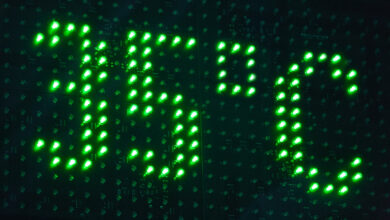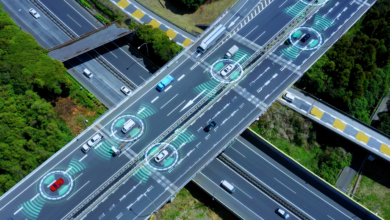The Evolution of Listcrollers: From Paper to Digital

A silent revolution has taken place in our search for productivity and a company, starting with the modest checklist. Our lists, which were formerly limited to scrap newspaper and sticky notes, are increasingly going digital. With life speeding up and our obligations piling up, it’s more important than ever to manage activities with resilience and efficiency. This is a tale of creativity and adaptation—how list scrollers made the transition from the conventional paper systems to the cutting-edge digital platforms.
The Influence of Paper
It may come as no surprise that the paper and pen were the original tools of the list-keeping method. As much as organizing techniques, the physical act of writing a chore and the gratification of checking it off the list are sensory experiences. Every item on the page, from long-term objectives to grocery lists, has a designated spot, demonstrating our need for both physical and visual structure.
The Countable Task List
Before the advent of the internet, both individuals and businesses would painstakingly create their own to-do lists by hand. These lists, which included project ideas and daily timetables, were essential to productivity. The quick overview provided by the visual layout allowed users to quickly prioritize tasks. When these lists were personal, they frequently had a link to the maker’s daily schedule or method of working.
The Versatility of Formats
Paper lists were amazingly flexible since they weren’t limited by software. At any time, a new task might be inserted in between two already-existing ones. This unplannedness was valued. Furthermore, the list was disposable because no specialized equipment or training was required; a new list could be made without regard for historical data.
Welcome to the Age of Digitalization
Not that the digital revolution ignored our treasured lists. It changed them by fusing these traditional instruments of organizing with the strength and connectivity that come only from digital platforms.
Infinite Property
With practically endless room for things, digital lists quickly became advantageous. Unlike paper lists, which may get congested due to overflow, digital lists can grow organically as their users do. This entails adding graphics, links, and files associated with those jobs in addition to the additional tasks themselves without overcrowding the original interface.
Collaborative Checklists
List’ definitions grew with the introduction of cloud computing. Due to the ability to allocate tasks inside a list to different team members, digital list-keeping gained a collaborative dimension that facilitated effective project management. Because it allowed for real-time updates and adjustments, this shared, live collaboration changed productivity inside groups.
Digital Personal Assistants: Advanced Lists
The to-do list became a crucial component of personal digital assistants and a part of our everyday digital lives with the advent of smartphones.
Time- and Location-Based Reminders
From being basic task trackers to becoming predictive, smart list applications made a significant advancement. With the help of geo-fencing, they were able to recognize your location and the time of day and remind you of your belongings. This degree of intelligence, based on a multitude of data points, transformed our lists into customized personal assistants that supported our daily activities with little effort.
Astute Reporting and Analytics
Furthermore, digital lists with analytics started to reveal information about a person’s productivity. These technologies could examine how long jobs take to finish, identify trends in task delays, and recommend areas for efficiency gains. Through the transformation of unprocessed task data into graphical displays, users were able to comprehend their work habits more deeply.
Automation and Integration: The Intelligent Catalog
The development of artificial intelligence and the Internet of Things (IoT) opened the door for lists that could comprehend, learn, and adapt in addition to keeping track.
Integrating Across Platforms
The digital list apps of today work flawlessly with a variety of devices and platforms. The laptop has carried over what was started on the phone, and an updated task list is waiting for your return. Unprecedented data cross-pollination between the personal and professional domains is connecting our personal and professional lives on new dimensions.
Improvements in Automation
Then there is automation: repeated jobs can be created once, left undone, and then reactivated as required. AI systems provide recommendations for activities based on your past actions and the situation at hand, offering nearly telepathic anticipatory support. As a result, to-do lists have evolved from being simple lists of tasks to be completed to proactive collaborators in productivity, reducing the cognitive strain associated with task management.
The Listcrollers’ Future
So what is in store for the listcroller in the future? Lists will probably change even more as we search for methods to combine the digital and the physical in our organizing endeavors. With digital lists projected into 3D space, virtual reality integration may lead to the revival of a tactile approach and provide a new level of visual interaction. Wearables and embedded smart technology can see a checklist that is always with you—literally, beneath your skin.
The Learning List
The idea of learning lists, however, is the most intriguing one. A list that anticipates your upcoming week or quarter, knows not just what you need to accomplish but also when and how you prefer to do it, adjusts in real time to your workflow, and provides remarkably accurate suggestions. Our approach to productivity will change along with our lists, both shaping and being molded by the technologies we employ.
In summary,
the shift from paper to digital list-keeping has been a necessary and organic development, reflecting our increasing demand for dynamic, flexible organization that blends seamlessly into our digital lives. From the to-do list’s humble paper beginnings to its current form as an artificially intelligent, ever-learning companion,
each iteration has given us new methods to organize our lives and improve the effectiveness and efficiency with which we complete our duties. As technologists and inventors figure out how to make our lists do even more of the heavy lifting in the pursuit of increased efficiency and organization, the future is full of promise.



